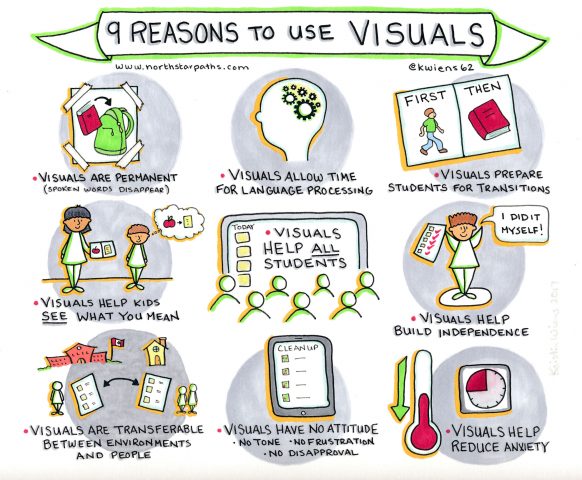
Incorporate white space in your notes.Handouts will help you keep track of the information being presented in the lecture. Before class begins, ask the teacher if there is a handout you can review during the lecture. Once you see the concept or principle in action, you'll have an easier time understanding it and recalling it later. Whenever possible, ask your teacher for a visual demonstration. Visual learners need to see how something is done. But, if used effectively, it can add value to your online tutorials and draw more learners to your online education platform.

If irrelevant they can cause distractions from the actual topic and in worst case scenarios, put off your audience. Hence, the key is to treat visuals like power boosters for your eLearning courses.

Hence, powerful images and visual metaphors create strong impressions and lasting memories in learners. Visual stimuli and emotional response are linked in a simple way and these two together generate what we call memories. For example, the infographic below represents how we are pre-wired to automatically interpret relationships between objects which ensures instant comprehension with almost zero effort:Įmotions and visual information are processed in the same part of the human brain. Besides, the visual language is also known to have the potential to stretch ‘human bandwidth’ – which comprises absorbing, comprehending and analysing new information. Visuals help learners grasp concepts easily by stimulating imagination and affecting their cognitive capabilities.

Hence, the eLearning programs which incorporate suitable visuals gain a higher preference over the text-only ones. Human eye can register 36,000 visual messages every hour.Our brain can see images that last for only 13 milliseconds.40% of nerve fibres are linked to the retina.Humans are capable of getting the sense of a visual scene in less than 1/10th of a second.As opposed to text, visuals are processed 60,000x faster.Of all the information transmitted to brain, 90% is visual.But, that same information in the form of an image or a video is processed even more quickly. Information listed in bullets is no doubt simpler to process. Whereas, images are directly processed by our long-term memory, where they get indelibly etched. Lynell Burmark, an education consultant, our short term memory processes words and can only retain about seven bits of information. Images are the simplest and the most effective way to make sure that the information gets stored as a long-term memory. Let’s learn what they are to help you better understand the power of visuals in eLearning: 1. There are several advantages of visual aids.


 0 kommentar(er)
0 kommentar(er)
